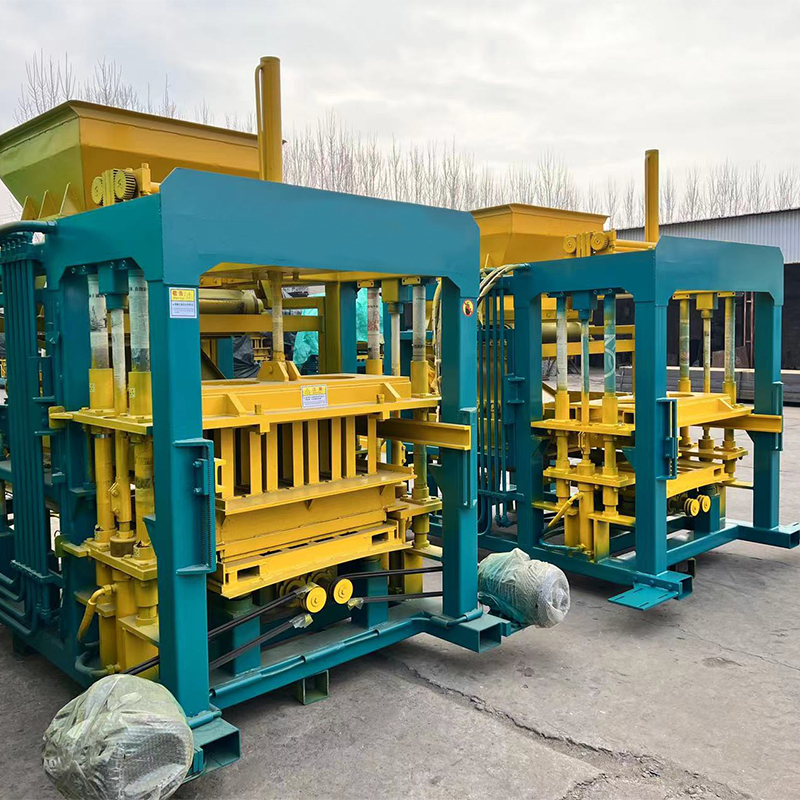
Image source Aiwei Block Machine
Introduction
Block making is a fundamental process in the construction industry, producing the building blocks used in structures ranging from residential homes to massive infrastructure projects. Traditionally, block making involved manual labor, making it time-consuming and labor-intensive. However, with the advent of automation and robotics, the industry is experiencing a transformation that promises to redefine how blocks are produced and used.
The Rise of Automation
Automated Block Making Machinery
Automation has been a game-changer in block making. Advanced block making machinery is now equipped with sophisticated control systems that manage every aspect of the production process. These machines can mold, compress, and stack blocks with remarkable precision and speed, significantly reducing labor costs and human error.
High-Speed Production
Automated block making machinery can produce a vast number of blocks in a short amount of time. This high-speed production capability is a significant advantage for large construction projects with tight schedules. The ability to quickly manufacture blocks contributes to project timelines and cost-effectiveness.
Robotics in Block Making
Robotic Block Laydown
One of the most striking innovations in block making is the integration of robotics into the production process. Robotic arms equipped with specialized software and sensors can precisely lay blocks with unmatched speed and precision. These robots work tirelessly, without the need for rest, and can operate in challenging environments, such as extreme temperatures or hazardous conditions.
Adaptability to Complex Designs
Robotic block laydown systems are highly adaptable and can handle intricate block patterns and designs. This flexibility enables architects and builders to explore innovative and artistic blockwork that was once too complex to execute manually. The potential for intricate and aesthetically pleasing designs in construction has expanded significantly.
Benefits of Automation and Robotics in Block Making
Enhanced Efficiency
Automation and robotics in block making significantly enhance production efficiency. These machines can work around the clock without fatigue, maintaining consistent quality and output. The reduction in manual labor also minimizes the risk of workplace injuries and improves workplace safety.
Precision and Consistency
Automation and robotics ensure precision and consistency in block production. Each block is identical in size and quality, eliminating variations that may occur with manual labor. This consistency is critical for structural integrity and architectural precision in construction.
Labor Savings
Automation and robotics reduce the need for a large workforce in block production. Labor savings translate into reduced labor costs, making construction projects more cost-effective. Moreover, it addresses the issue of labor shortages in the construction industry, particularly in regions where skilled labor is in short supply.
Speedy Production
Automated block making machinery and robotics can produce blocks at a significantly faster rate than manual labor. This speed is a crucial factor in meeting project deadlines, reducing construction timelines, and ensuring timely project completion.
Challenges and Considerations
Initial Investment
While the benefits of automation and robotics in block making are significant, the initial investment in advanced machinery and robotics can be substantial. Manufacturers and construction companies must weigh the upfront costs against the long-term benefits and project requirements.
Training and Maintenance
Operating and maintaining automated machinery and robotics require skilled personnel. Companies investing in these technologies must invest in employee training to ensure safe and efficient operation. Additionally, routine maintenance and occasional repairs are essential to keep these machines operating at peak performance.
Integration with Existing Processes
Integrating automation and robotics into existing block making processes can be challenging. Companies must carefully plan and adapt their workflows to incorporate these technologies seamlessly. This may require changes to plant layouts and production schedules.
Sustainability Concerns
While automation and robotics offer numerous benefits, there are sustainability concerns to consider. The energy consumption of automated machinery and the environmental impact of producing robotic components can offset some of the sustainability gains made in block production. Manufacturers must strive to balance efficiency with sustainability.
The Future of Block Making: A Seamless Blend of Automation and Human Expertise
The future of block making is undoubtedly a fusion of automation and human expertise. While automation and robotics are revolutionizing the industry, there will always be a need for skilled operators, engineers, and maintenance personnel to ensure the machines operate efficiently and safely.
Conclusion
Automation and robotics are at the forefront of revolutionizing the block making industry, offering unprecedented levels of efficiency, precision, and productivity. These technologies are not just improving the manufacturing process; they are reshaping the possibilities for design and construction.
As the construction industry continues to evolve, embracing automation and robotics in block making will become increasingly vital to meet the growing demands for construction projects worldwide. The benefits of reduced labor costs, enhanced efficiency, and the ability to tackle complex designs make automation and robotics a compelling choice for construction companies looking to stay competitive in the ever-changing landscape of construction. While there are challenges to overcome, the future of block making holds great promise, promising safer, more efficient, and more innovative construction projects worldwide.
